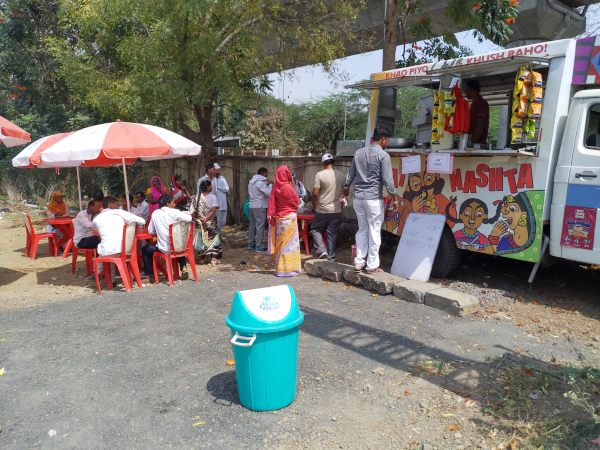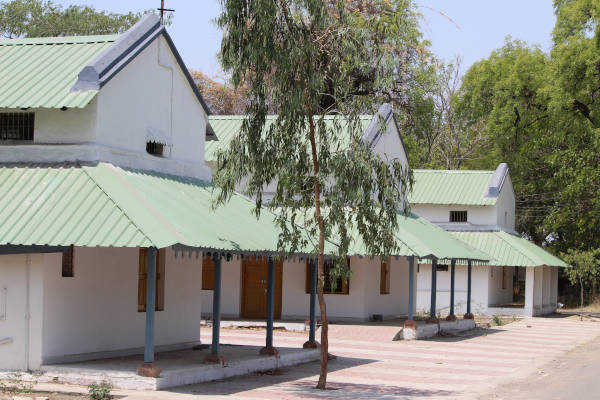[This is a representational photo. Photo by Banjo Emerson Mathew on Unsplash]
By Tasneem Raja, Dr Anand Bang, and Aastha Sethi
After much thinking through to create a programme that works to reintegrate people with mental illnesses back into society at Tata Trusts, Abdul (name changed) is one of our success stories. When we found him in 2017, he was then a young man in his late 20s from a small village in the South 24 Parganas district of West Bengal. Our team found Abdul at the Regional Mental Hospital, Nagpur, where he was brought through the intervention of a civil society organization via law enforcement. He was found wandering the streets of Ramtek, a block in Nagpur district, unkempt, muttering to himself and occasionally getting into fights with people passing by. We wondered what twists and turns in Abdul’s life may have taken him so far away from home?
By now we know such narratives are common among the ten million people in India who live with severe mental disorders (SMD). This includes people with psychosis, schizophrenia and bipolar disorder. What is alarming is that less than 25% of those who suffer from SMD receive any formal healthcare.
What exacerbate matters are social barriers such as poverty, gender, caste and class and education. Then there are demand side barriers that include how individuals, their families and the community around them perceive the need for care. This has to do with a paucity of knowledge about mental disorders and a deep-rooted stigma associated with mental illness.
These social and demand barriers play out differently in different contexts. That is why the trajectory of a Dalit woman from a hamlet in Bihar would be very different to that of a man in urban Mumbai. The latter may find himself locked away in an elite home while the former may be subjected to abuse or find no care.
All these are compounded by low access to treatment. India has 0.3 psychiatrists for every one lakh people as against the global average of two. Not just that, the bulk of mental health services in India lie within psychiatric hospitals which are inequitably distributed across the country and are shrouded in low standards of care and human rights violations. Just how did things get here? And do these hold pointers to the twists and turns in Abdul’s life?
How things went downhill
Over time, the global narrative on mental health has tilted towards reducing beds in mental hospitals. The focus shifted to how can such services be provided by the community an individual is in. This narrative gained momentum in the mid-20th century after horror stories emerged from mental health institutions about the poor living conditions, the huge costs these hospitals incur, and the discovery of psychiatric medications.
What we now know is that this strategy has met with mixed results even in countries with access to high resources. Multiple cases have been reported of people with severe mental illness finding themselves in prisons. And in countries such as India where the primary health care fabric is tattered, integrating services for mental health poses significant challenges.
Indian policy makers adopted this narrative as well and a community-based mental health care programme was started in 1996 by the government of India. It is called the District Mental Health Programme (DMHP). On paper, it offers a range of services including psychiatric clinics at health care facilities, community engagement through the frontline health workforce also known as ASHAs (Accredited Social Health Activists) and community residential facilities for those who are severely mentally ill.

[Accredited Social Health Activists (ASHAs) learning how to screen for distress and mental illness in the community.]
What has gone unreported is that the DMHP programme is currently operational only in one-third of the districts it was launched in. And those that are operational have met with limited success. It is inevitable then that the most vulnerable are at the greatest risk.
When looked at from an Indian perspective, mental hospitals have a significant role to play. But not in the shape they were in. Most mental hospitals in India were built during the British colonial rule 150-200 years ago and largely continue to function as they did when they were set up. If they had to do any good, they had to be reformed and revamped.
A glimmer of hope
We were clear about this when the Tata Trusts was invited to collaborate with the Maharashtra government to reform the Regional Mental Hospital at Nagpur and develop it as a centre of excellence. We were called in because over time the Trust has gained credibility as one of the oldest, non-sectarian philanthropic organizations in India. And we have played a key role in shaping conversations around mental health in India. Our involvement goes beyond providing financial help to initiating, supporting and scaling innovative programmes across the country. When we sat down with the government to collaborate and conceptualize a programme, the outcome was Udaan. Our deliberations suggested we work on structural reforms across four domains.
1. Colonial era wards at mental health care institutions are dilapidated places that made inmates feel like prisoners in a jail. The task then was to convert them into modern spaces with cubicles, entertainment zones and dining areas that promoted autonomy. This thinking was taken outside the wards as well and ten acres of land with overgrown weeds was brought under cultivation. It was only a matter of time before residents at the hospital took to farming and acquired a skill.
2. After Udaan was implemented, we figured all processes must be examined and optimized. By way of example, psychiatric history taking was standardized.
3. The other thing we had to work on was to ensure that people working at hospitals are upskilled. This was to ensure all reforms that are implemented will be sustained in the longer run.
4. But the biggest reform we thought up was to craft individual interventions. This meant mapping the lives of people along 11 domains such as physical health, emotional wellbeing, social and family relationships among others. Basis the data that emerged, our team could then work on customised plans to help each person reintegrate them into the ‘mainstream’.
To work on all this, the team thought up Half-Way Homes. This was intended to bridge the gap between the fully dependent environment of a mental hospital ward and independent living in the community. The structure and function of this Home are designed to promote autonomy and independence even as supervision and support is provided to an individual as they transition from dependence to independence.
How the little things matter may not be obvious to those on the outside who take much for granted. To place that in perspective, giving people the space and tools to help them groom themselves matters. To do that, we put mirrors. When we did that, for the first time in many years, many people saw what they look like. Their expressions had to be seen to be believed.
Standing on his feet
Back to Abdul. After he was found, he was placed at the mental hospital and his treatment was initiated. Upon investigating his narrative, it emerged that he had gotten hooked to cannabis early on in life. And as he ventured away from home to search for work, a series of stressful events followed. This included him not being paid by a contractor for work he had done and losing whatever little he had to fund his cannabis purchase. In turn, this amplified the underlying symptoms of his mental illness. Abdul’s wanderings led him to Ramtek where he found help.
It was here that Abdul was assigned to a Case Manager who worked with him to piece his story and life, one thread at a time. Abdul’s Hindi was heavily interspersed with Bengali. That made it apparent he was from West Bengal. Eventually, the manager traced him to a village five hours away from Kolkata.
Abdul’s family was predominantly agrarian. However, some of them worked as karigars or embroiderers. He grew up with six brothers and his parents. Some of Abdul’s brothers worked in different parts of the country while a few were based in the village with their mother. He had lost his father and older brother. But he could recollect details of a cousin who lived in Nagpur.
Abdul spoke to his Case Manager about his early life, about his schooling which he had completed till Class V, and about his work. He had worked in other parts of India like Delhi and Punjab, doing embroidery. In a conversation with Tasneem, the Mental Health Lead, Abdul described in detail the kind of embroidery he could do. He also expressed a desire to reuse his embroidery skills.
The hospital reform process allowed for a deeper, protocolled and systematic engagement process. It allowed Abdul to be moved to the Half-Way Home. This is where he was trained in basic life skills that he had lost to the illness. Small changes played a big role in his rehabilitation. Abdul moved from wearing hospital uniform to coloured civil clothes. He learnt to choose clothes he liked, to wash them, and keep them clean. He started to take care of his own living space.
This is where he started following a daily schedule of coming to Udaan’s office on the hospital campus. In the beginning he used to be escorted. Soon, he could move on his own. At the office, Abdul learnt housekeeping and office management. He learnt how to run a photocopying machine and other tasks an office boy needed to know to keep the place running. With each skill Abdul acquired, there were marked changes in him. He gained confidence, initiated conversations with co-workers, shared meals with them and made friends.

[Setting up a food truck, a platform to train people living with severe mental disorders, inside the Regional Mental Hospital, Nagpur]
Based on the sketchy details Abdul gave about his home, the team could trace his family and prepare them to reintegrate. An important requirement of reintegration is the continuous availability of care. Through our network of NGO partners on the ground, a service link was forged for Abdul. His mother along with his cousin came to take Abdul back home.
Finding Abdul and reintegrating him was hugely gratifying. Along the way, we learnt some very important lessons as well.
Reform is extraordinarily challenging. And humans inherently resist change. So yes, there have been several challenges to the reform process. This included resistance from people within who were at work on Udaan as well; as from those at the hospital. They would raise questions such as—if mirrors are installed, what if inmates run away with them. It sounded exasperating. But we thought it important that this be discussed and debated openly. Through debates such as these, people at work on the programme eventually came around. This has taught us that we can only be a catalyst of change, not the agent of change.
More importantly, over time, we empowered everybody at work on the project to take key decisions. But to do that, we asked them to think through it patiently by turning the gaze inward to ask themselves a simple question: Would this process be okay if I were the patient? If the answer was no, then it cannot be okay for another human being. This is driven by our belief that the voice of the ‘user’ must find primacy over all else.

[Newly refurbished family wards at the Regional Mental Hospital, Nagpur]
Perhaps, that is why, the programme has managed to reintegrate 40 people back with their families, 100 people have been provided with intensive care and over 1,000 days of training have been delivered to health workers until now. There is much else to be done and it is work in progress.
Over the next two months, we will publish clinical evidence on patient outcomes and the costs that process takes. But at least, there is a template in place. What we know—and have come to believe—is that a more humanitarian approach lies at the heart of it.

